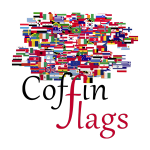Description
 Uruguay, officially the Oriental Republic of Uruguay, is a country in the southeastern region of South America. It borders Argentina to its west and Brazil to its north and east, with the Río de la Plata (River of Silver) to the south and the Atlantic Ocean to the southeast. Uruguay is home to an estimated 3.45 million people, of whom 1.8 million live in the metropolitan area of its capital and largest city, Montevideo. With an area of approximately 176,000 square kilometres (68,000 sq mi), Uruguay is geographically the second-smallest nation in South America, after Suriname.
Uruguay, officially the Oriental Republic of Uruguay, is a country in the southeastern region of South America. It borders Argentina to its west and Brazil to its north and east, with the Río de la Plata (River of Silver) to the south and the Atlantic Ocean to the southeast. Uruguay is home to an estimated 3.45 million people, of whom 1.8 million live in the metropolitan area of its capital and largest city, Montevideo. With an area of approximately 176,000 square kilometres (68,000 sq mi), Uruguay is geographically the second-smallest nation in South America, after Suriname.
The national flag of Uruguay is one of the three official flags of Uruguay alongside the flag of Artigas and the flag of the Treinta y Tres. It has a field of nine equal horizontal stripes alternating white and blue. The canton is white, charged with the Sun of May, from which 16 rays extend, alternating between triangular and wavy. The flag was first adopted by law on December 16, 1828, and had 19 stripes until July 11, 1830, when a new law reduced the number of stripes to nine. The flag was designed by Joaquín Suárez. The horizontal stripes on the flag represent the nine original departments of Uruguay, based on the U.S. flag, where the stripes represent the original 13 colonies. The first flag designed in 1828 had 9 light blue stripes; this number was reduced to 4 in 1830 due to visibility problems from a distance. The Sun of May represents the May Revolution of 1810; according to the historian Diego Abad de Santillán, the Sun of May is a figurative sun that represents Inti, the sun god of the Inca religion. It also appears in the Flag of Argentina and the Coat of Arms of Bolivia.







